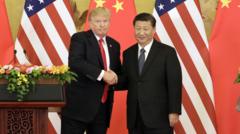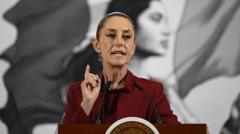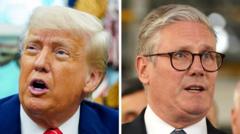With the Conservatives gaining ground in Greater Toronto, the upcoming federal election highlights escalating tensions surrounding economic policies and leadership changes, particularly amid recent tariffs imposed by the United States.
Key Factors Shaping Canada's Upcoming Election

Key Factors Shaping Canada's Upcoming Election
As the Canadian election approaches, Greater Toronto could play a pivotal role in determining the winner amid rising economic challenges and shifting voter sentiment.
In the lead-up to Canada’s next federal election, the political landscape is fraught with uncertainty, especially in Greater Toronto, an area crucial for both the Liberal and Conservative parties. Traditionally a bastion of Liberal support, the region has seen a significant shift, with rising housing and food costs driving voters toward the Conservative party. This trend accelerated after former President Trump imposed tariffs on Canada, further complicating the electoral equation.
The Liberal Party, having maintained a grip on power for almost ten years, faced a major setback last year when it lost a special election in downtown Toronto, a district held for 28 years. Analysts suggest that this unexpected defeat prompted Prime Minister Justin Trudeau to resign, catalyzing the current election cycle.
With 343 seats in the House of Commons up for grabs and 56 located in the Greater Toronto Area, this region's votes will heavily influence who leads the country through a significant economic trade dispute with the United States. The leading candidates for Prime Minister, Liberal Mark Carney and Conservative Pierre Poilievre, are set to battle for these crucial votes, contesting against a backdrop of shifting voter priorities and lingering economic concerns. The outcome could very well define Canada’s policy direction in the years to come.






















